- Trips
- Tour Calendar
- About Our Tours
- Plan a Trip
- Book a Trip
- About Us
- Contact Us


Switzerland’s Museums put thousands of years of history and culture on display. Top museums cover sports, watches, wine, trains, art, farming, and more. With so many museums to choose from, we have put together a list of our favorites that can be included on many Switzerland tours.
Even before you visit your first museum in Switzerland the most important thing to know is that there is a Swiss Museum Pass which is valid for a year and gives you free admission to about 500 museums in Switzerland, making it one of the best values in all of Switzerland. Just visit a handful of the museums below and it quickly pays for itself. You can purchase the Swiss Museum Pass at SBB ticket counters. The adult prices is CHF 166 (or CHF 146 with a Swiss Rail Half Fare Card). There is also a family passport valid for two adults and up to five children under age 16 for CHF 288 (or CHF 269 with a Half Fare Card). The Swiss Museum Pass is also included with a Swiss Travel Pass.
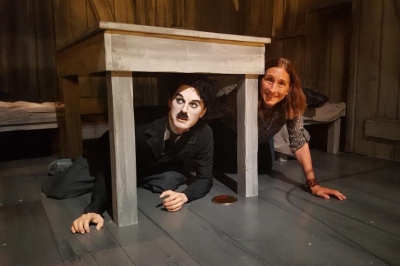
Set on the site of his sprawling estate in Corsier sur Vevey, where film legend Charlie Chaplin spent the last 25 years of his life, Chaplin’s World opened in June 2016 to rave reviews. As you visit his Manor home, you’ll meet Charlie Chaplin along with his family and friends. Then in a Hollywood-style theater and studio you embark on a singular journey through the sets of his greatest films accompanied by hundreds of film clips, and dozens of lifelike wax figures that draw you into the action and place you in the limelight of his most popular films. Chaplin’s World is an innovative and interactive introduction to the life and work of one of the most influential, ingenious, and popular actors and filmmakers of all time. Chaplin’s World is day of laughter and complete enjoyment—a must-see when you’re in western Switzerland’s Montreux Riviera.
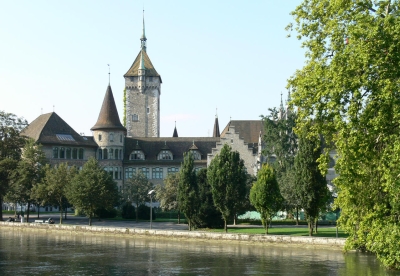
 The National Museum houses the largest cultural and historical collection in the country. Gustav Gull built the Swiss National Museum in 1898 to mark the 50th anniversary of the first federal constitution. The museum building, set between the main train station and the Platzspitz Park, is reminiscent of a fairytale castle. There are actually three museums – the National Museum Zurich, the Castle of Prangins and the Forum of Swiss History Schwyz – as well as the collections centre in Affoltern am Albis – which are united under the umbrella of the Swiss National Museum (SNM). Swiss history is depicted in the permanent exhibitions at the museums, and gives an insight into the Swiss character and the country’s culture. The museums also include temporary exhibitions on current topics to add to the experience. This is a wonderful museum containing artifacts, dioramas, and examples of the Swiss culture and history, but plan plenty of time to visit if you hope to see it all. Souvenirs, Swiss crafts and design products are also on sale from the museum shop.
The National Museum houses the largest cultural and historical collection in the country. Gustav Gull built the Swiss National Museum in 1898 to mark the 50th anniversary of the first federal constitution. The museum building, set between the main train station and the Platzspitz Park, is reminiscent of a fairytale castle. There are actually three museums – the National Museum Zurich, the Castle of Prangins and the Forum of Swiss History Schwyz – as well as the collections centre in Affoltern am Albis – which are united under the umbrella of the Swiss National Museum (SNM). Swiss history is depicted in the permanent exhibitions at the museums, and gives an insight into the Swiss character and the country’s culture. The museums also include temporary exhibitions on current topics to add to the experience. This is a wonderful museum containing artifacts, dioramas, and examples of the Swiss culture and history, but plan plenty of time to visit if you hope to see it all. Souvenirs, Swiss crafts and design products are also on sale from the museum shop.
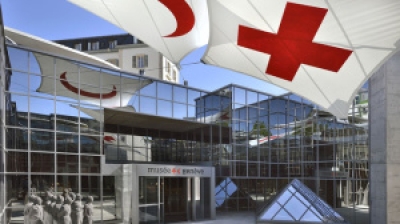
 The Red Cross Museum offers a unique opportunity to enter into the history of humanitarian action with emotion, discovery and reflection. There are three separate areas in the museum, each exploring major challenges in today’s world. 1. Defending human dignity 2. Restoring family links 3. Reducing natural risks. There is also an interactive chronology of 150 years of humanitarian history as well as showing visitors what the Red Cross’s current operations are through a large interactive globe. The museum underwent a renovation in 2013 in order to reflect today’s changing world, and particularly the changes affecting humanitarian action. This museum is aimed at raising awareness through intense emotional experiences as well as providing historical background of this oldest and largest humanitarian organization in the world.
The Red Cross Museum offers a unique opportunity to enter into the history of humanitarian action with emotion, discovery and reflection. There are three separate areas in the museum, each exploring major challenges in today’s world. 1. Defending human dignity 2. Restoring family links 3. Reducing natural risks. There is also an interactive chronology of 150 years of humanitarian history as well as showing visitors what the Red Cross’s current operations are through a large interactive globe. The museum underwent a renovation in 2013 in order to reflect today’s changing world, and particularly the changes affecting humanitarian action. This museum is aimed at raising awareness through intense emotional experiences as well as providing historical background of this oldest and largest humanitarian organization in the world.
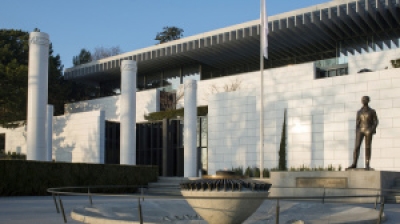
The Olympic Museum has permanent and temporary exhibits relating to sports and the Olympic movement. There are over 10,000 pieces on display and is the largest archive of the Olympic Games in the world. This museum is one of the top tourist sites in Lausanne bringing in more than 250,000 visitors each year. The museum recently underwent an extensive renovation and reopened in December 2013. The museum is organized into three major themes on three separate floors. On the first floor is “The Olympic World, The Olympic Games and The Olympic Spirit.” This exhibit gives information on the history of the ancient games and rebirth of the modern games. The second floor focuses on “The Olympic Games,” with emphasis on the sports, athletes and events of the Olympic Games. The third floor covers “The Olympic Spirit,” where visitors can see medals on display. The Olympic Museum is surrounded by a park containing numerous works of art which are sport’s themed.
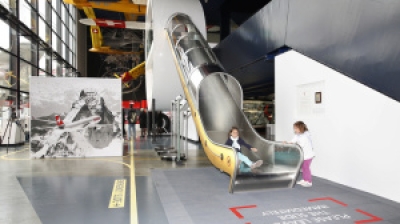
The Swiss Museum of Transportation opened in 1959 and is Switzerland’s most popular museum. There are more than 3,000 items on display that showcase the development of traffic on roads by rail, on water, in the air and in space. There are many interactive exhibits that allow the visitor to take part in the history of transportation. There are three railway simulators, an airplane simulator and even a crash test to feel what it would be like in a car crash. For an additional charge visitors can visit the planetarium, an IMAX theater, or The Swiss Chocolate Adventure which is a new theme world that allows visitors to learn about the production and transport of chocolate. This museum is great for all ages and a must see if you are in Lucerne
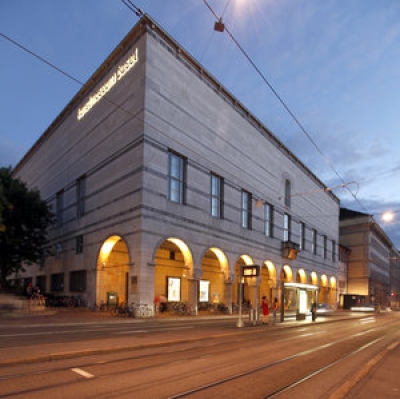
 The Kunstmuseum Basel (also known as the Museum of Fine Art) has the largest and most significant public art collection in Switzerland, and is listed as a heritage site of national significance. It is also considered to be one of the most prominent art museums worldwide. The museum focuses on the paintings and drawings by Upper-Rhine and Flemish artists from 1400 to 1600 and international art of the 19th to 21st centuries and holds the world’s largest collection of works by the Holbein family. Beginning February 2015, the Kunstmuseum Basel will close its main building for renovation work and to connect to the extension building before re-opening in April 2016. Select masterpieces from the Kunstmuseum Basel will be on view throughout the closure in several exhibitions in Basel and Madrid.
The Kunstmuseum Basel (also known as the Museum of Fine Art) has the largest and most significant public art collection in Switzerland, and is listed as a heritage site of national significance. It is also considered to be one of the most prominent art museums worldwide. The museum focuses on the paintings and drawings by Upper-Rhine and Flemish artists from 1400 to 1600 and international art of the 19th to 21st centuries and holds the world’s largest collection of works by the Holbein family. Beginning February 2015, the Kunstmuseum Basel will close its main building for renovation work and to connect to the extension building before re-opening in April 2016. Select masterpieces from the Kunstmuseum Basel will be on view throughout the closure in several exhibitions in Basel and Madrid.
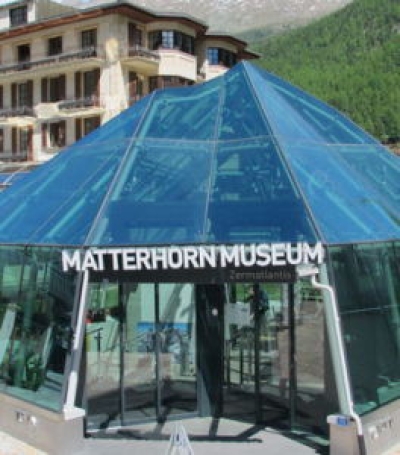
 The Matterhorn museum is in the form of a reconstituted mountain village consisting of 14 houses (church, hotel, huts, and granaries), and relates the history and development of the Zermatt area. It is a small museum under the village square and full of rich history with powerful pictures and incredible stories. Come and see how people lived in Zermatt in the 19th century and view the broken rope from the first ascent of the Matterhorn in 1865 by Edward Whymper and party where four of the seven climbers lost their lives. The museum arranges special exhibitions on a regular basis and has established itself as the top location for cultural performances in Zermatt. You can also hire the rooms of the museum for your own events. Most of our Haute Route and Swiss tours will stop in Zermatt where you can visit this museum.
The Matterhorn museum is in the form of a reconstituted mountain village consisting of 14 houses (church, hotel, huts, and granaries), and relates the history and development of the Zermatt area. It is a small museum under the village square and full of rich history with powerful pictures and incredible stories. Come and see how people lived in Zermatt in the 19th century and view the broken rope from the first ascent of the Matterhorn in 1865 by Edward Whymper and party where four of the seven climbers lost their lives. The museum arranges special exhibitions on a regular basis and has established itself as the top location for cultural performances in Zermatt. You can also hire the rooms of the museum for your own events. Most of our Haute Route and Swiss tours will stop in Zermatt where you can visit this museum.
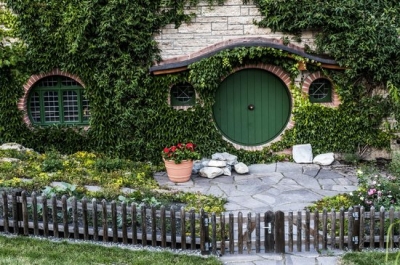
The Greisinger Museum is located in eastern Switzerland, precisely in Jenins (just outside of Chur), and has been open since October 2013 for fans and friends of Middle-earth. This museum is on the property of the owner, Bernd Greisinger and houses the largest private collection of artifacts and artwork related to “middle earth.” If you are a fan of Tolkien, then this museum offers a very unique experience to see thousands of one-of-a-kind items on display. There are over 600 original paintings by more than 100 artists inspired by Tolkien’s works. The entrance is designed to look like the hobbit hole and the museum extends underground to display this distinctive and vast collection. You can only visit by making a reservation and will be given a personalized tour either in the mornings or afternoons.
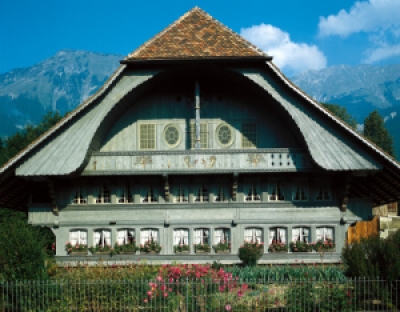
 More than 100 century-old buildings from all over Switzerland have been painstakingly transported, authentically reassembled, and lovingly restored in this idyllic 160-acre rural setting. Hundreds of farm animals, gardens, fields, and demonstrations of traditional crafts and skills bring the past to life. Throughout the mid-April to late-October season you’ll experience varied demonstrations and events such as shingle making, running a sawmill, woodcarving, weaving, oil pressing, barrel making, saddle making, charcoal burning, and resin tapping--all giving a wonderful hands-on glimpse into how 18th and 19th century people lived. Walk through the old homes, and explore the bedrooms, kitchens, and parlors of these houses. A schoolhouse, church, many farm buildings, shops, and trade workshops provide and well-rounded and fascinating exposure to life in the past. Ballenberg revives ancient folk customs from old-time costumes and dance, to lace and linen making. It’s impossible to see it all in one day, but you can have a lot of fun trying. Restaurants and shops serve food such as bread, sausage, and cheese produced on-site or nearby using traditional methods. There are docents at many of the buildings and guided tours available in English. Great for families. Bring good shoes and expect to do some walking.
More than 100 century-old buildings from all over Switzerland have been painstakingly transported, authentically reassembled, and lovingly restored in this idyllic 160-acre rural setting. Hundreds of farm animals, gardens, fields, and demonstrations of traditional crafts and skills bring the past to life. Throughout the mid-April to late-October season you’ll experience varied demonstrations and events such as shingle making, running a sawmill, woodcarving, weaving, oil pressing, barrel making, saddle making, charcoal burning, and resin tapping--all giving a wonderful hands-on glimpse into how 18th and 19th century people lived. Walk through the old homes, and explore the bedrooms, kitchens, and parlors of these houses. A schoolhouse, church, many farm buildings, shops, and trade workshops provide and well-rounded and fascinating exposure to life in the past. Ballenberg revives ancient folk customs from old-time costumes and dance, to lace and linen making. It’s impossible to see it all in one day, but you can have a lot of fun trying. Restaurants and shops serve food such as bread, sausage, and cheese produced on-site or nearby using traditional methods. There are docents at many of the buildings and guided tours available in English. Great for families. Bring good shoes and expect to do some walking.
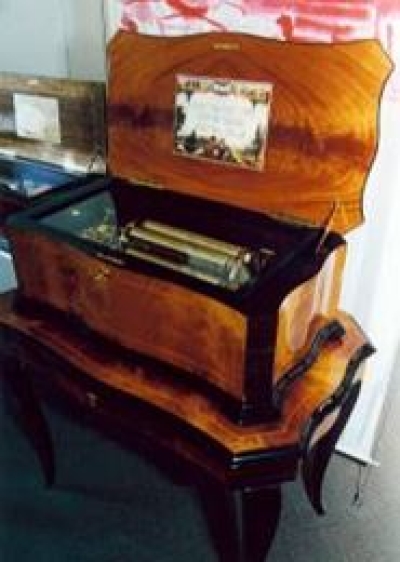
Set in the Jura mountain village of Sainte-Croix, this museum is dedicated to music boxes and mechanical music. The museum features exhibits on the history of mechanical music with objects ranging from singing birds to exquisite and elaborate Reuge music boxes to the cylinder phonograph invented by Thomas Edison. In 1796 clockmaker Antoine Favre-Salomon invented a musical pocket watch, from which evolved the music box. Sainte-Croix soon became the world center of mechanical music, and by the end of the 19th century over 40 companies and 600 workers produced music boxes, mechanical singing birds, and cylinder phonographs in this hillside town. Today most of the world’s music boxes are made in China, but virtually every hand-crafted high-end music box--many costing thousands of dollars each--are made in Sainte-Croix. A visit to the museum opens the doors to a marvelous, extraordinary, and rich world of tradition and musical craftsmanship.
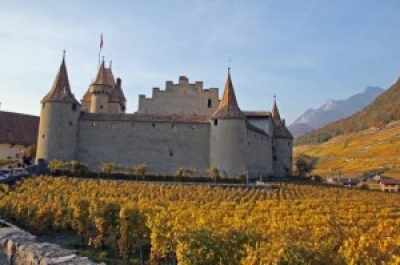
Set on a sloping plain in the Rhone Valley beneath the peaks of Vaud Alps, Aigle Castle has a picture-perfect location. The oldest parts of Aigle Castle date back to the twelfth century but the present structure is rooted in the period of Bernese occupation (1475-1798). Since 1976 it has been the permanent home of the Vine and Wine Museum. The museum encompasses over 2000 years of viticulture in Switzerland and the Rhone Valley, going back to Roman times. It has 17 rooms displaying the cultural aspect of wine production, with a special exhibit of wine bottle labels organized by theme in slide-out trays. Other exhibits, including tools, winepresses, casks, stills, pewter jugs, barrels, measures, bottles, corks and corkscrews, taster cups, glasses and carafes, take visitors on the journey from the vine to the table. Aigle Castle is a great day-trip destination. The views of the vineyards from the castle are superb.
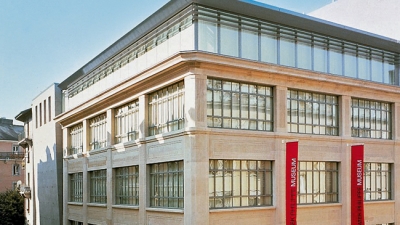
 Patek Philippe Museum is home to the prestigious creations of the Geneva-based firm of master watchmakers which was founded in 1839. Patek and Phillipe were 2 men living in the 16th century in Geneva who started to manufacture clocks. Because of the prestigious work and accuracy of time measurement, they soon become world most popular and demanded clocks, starting the trend of high quality Swiss clocks fame. The museum is located in a building from the early 20th century and has four levels of watches on display. There is a large antique collection of watches that were made from the 16th-19th centuries. The Patek Philippe collection of watches is also on display from the original watches made in 1839 to the present. If you like Swiss watches and in Geneva, then this is a great museum to learn about the history of watchmaking and the evolution of how watches are made today. The artistry and workmanship on these watches is astounding and visitors will be amazed at how many watches there are on display at this museum. There are public and private guided tours daily and come highly recommended.
Patek Philippe Museum is home to the prestigious creations of the Geneva-based firm of master watchmakers which was founded in 1839. Patek and Phillipe were 2 men living in the 16th century in Geneva who started to manufacture clocks. Because of the prestigious work and accuracy of time measurement, they soon become world most popular and demanded clocks, starting the trend of high quality Swiss clocks fame. The museum is located in a building from the early 20th century and has four levels of watches on display. There is a large antique collection of watches that were made from the 16th-19th centuries. The Patek Philippe collection of watches is also on display from the original watches made in 1839 to the present. If you like Swiss watches and in Geneva, then this is a great museum to learn about the history of watchmaking and the evolution of how watches are made today. The artistry and workmanship on these watches is astounding and visitors will be amazed at how many watches there are on display at this museum. There are public and private guided tours daily and come highly recommended.